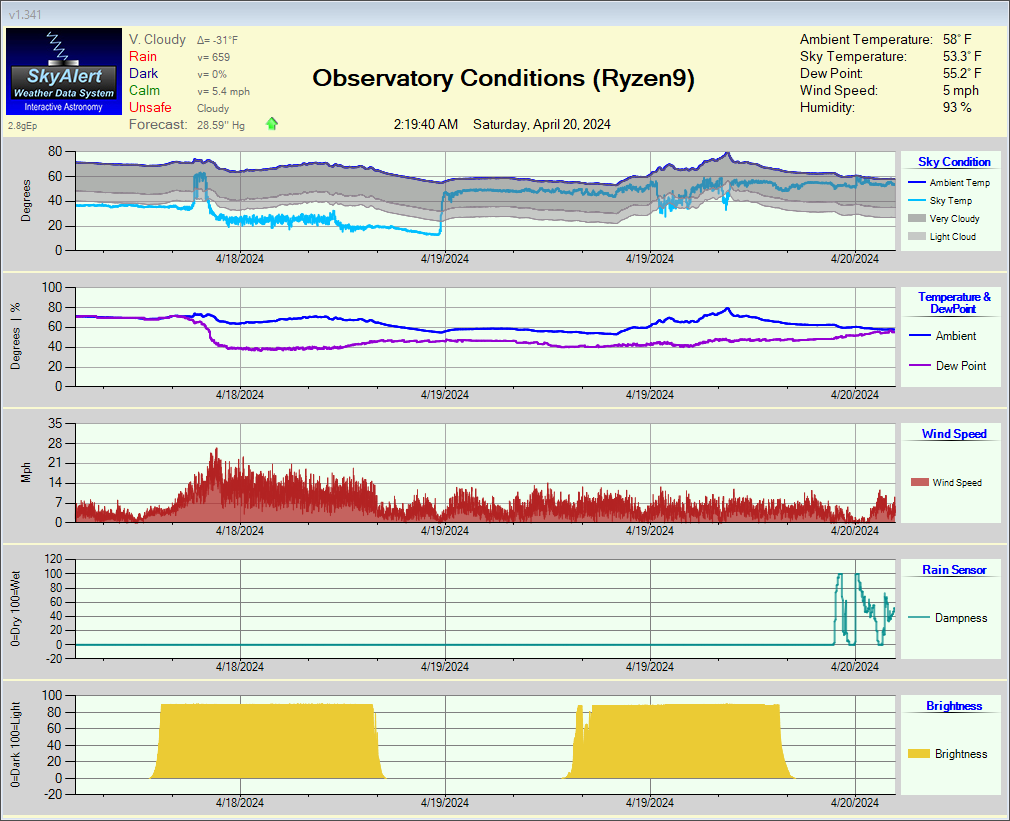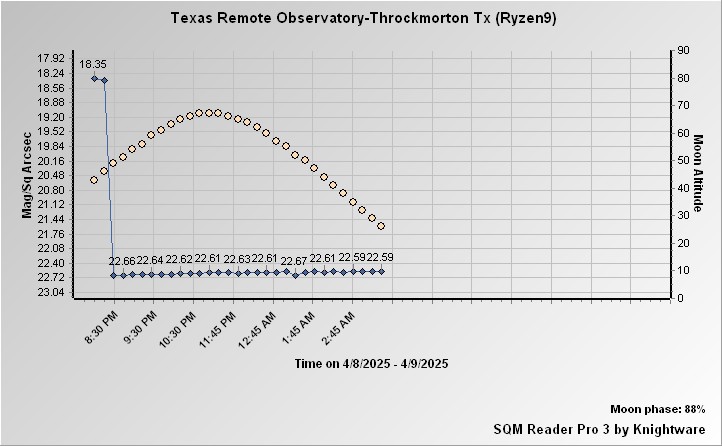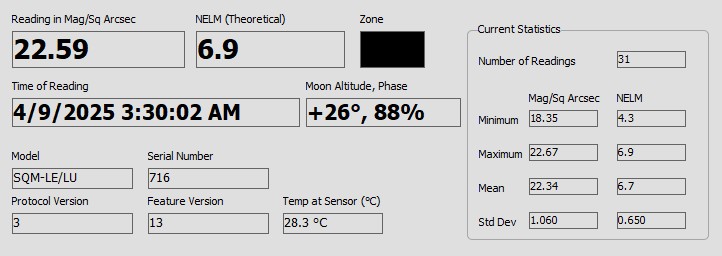
Current Weather
The interactive astronomy weather station is located outside the observatory and runs 24x7 real-time. It always displays the latest weather from the observatory.



The interactive astronomy weather station is located outside the observatory and runs 24x7 real-time. It always displays the latest weather from the observatory.

This Camera displays the latest real time image from the observatory. It is located on the SE corner and is a PTZ camera.

The AllSkyEye Camera is located inside the observatory and runs 24x7 real-time. It always displays the latest image from the observatory. It utilizes a sensitive QHY-462C planetary camera and clearly shows the bright milky-way in our incredibly dark skies. Every morning a video compilation of the nights images are saved to the AllSkyCam directory. Videos contain time-stamps which are very useful in sorting through the nights image run.


The UnihedronLE SQM meter is located inside the observatory. The SQM meter only runs at night starting at local sunset. At night it's graph is updated real-time. During the day the previous night's final graph is displayed. During the next evening session a new nightly graph is started. MPSAS readings > 23 means the observatory is not open or has automatically closed due to inclement weather during the evening. The observatory typically reports 21.75 and greater MPSAS during evening sessions. This is truly Bortle 1..2. The darkness is superb and there are no gradients in 20+ minute broadband exposures. Most importantly the sky is so dark dim objects can be recorded in very short sessions.
;?)

The SBIG-SM2 seeing monitor is located inside the observatory. The Seeing monitor only runs at night. Starting at 9:30pm CST. At night it's graph is updated real-time.
During the day the previous night's final graph is displayed. During the next evening session a new nightly graph is started.
Seeing usually ranges between FWHM 1.9-2.5 arc seconds at the Zenith during typical Texas nights.
During clear summer nights or late winter seeing can run between 1.4 -2 arc seconds.
In Texas during the summers very hot temperatures, stable high pressure areas tend to produce some
extremely good seeing and imaging weather over longer periods. TEC coolers are another issue. Seeing fluctuates during the evening based on the weather
and jet-stream patterns. Spring time usually produces unstable air and fast moving frontal systems with degraded seeing.
TypicalSeeing
In Texas during the summers very hot temperatures,
stable high pressure areas tend to produce some extremely good seeing and imaging weather over longer periods. TEC coolers are another issue.
GoodSeeing_Aug2022
GoodSeeing_Aug2023
The seeing graph is an excellent tool to confirm nightly auto-guiding and imaging expectations.
Good seeing nights have produced some superbly resolved deep space images as well as exo-planet research results:
M1-TheCrabNebula-3.83hrsOSC
Taken with a 155mm refractor, M1 is 6 arc/minutes in size.
A blue/white plot at zero means the observatory is closed.
The white plot is avgerage seeing per measurement in arc-seconds.
The blue plot represents the quality of each measurement.
Lower blue counts may be due to haze or clouds.
If you are having issues with the Seeing Measurement graph not updating please clear the cache on your browser.